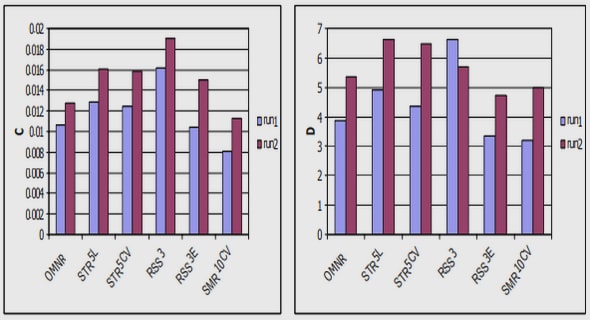(Downloads - 0)
For more info about our services contact : help@bestpfe.com
Table of contents
CHAPTER 1 MODELING AND DESIGN OF COMPOSITE STRUCTURES: STATE OF THE ART
1.1 INTRODUCTION
1.2 LAMINATED STRUCTURES
1.2.1 Definition
1.2.2 Major parameters
1.3 MULTISCALE APPROACH
1.3.1 Analytical multiscale
1.3.2 Computational multiscale
1.4 REPRESENTATION OF LAMINATED STRUCTURES
1.4.1 Relevance of simulation
1.4.2 Generalities
1.5 MULTIPHYSICAL APPROACH
1.5.1 Multiphysical point of view in composite structures
1.5.2 Viscoelasticity in composite structures
1.6 SIMULATION OF COMPOSITE STRUCTURES, ADVANCES, AND LIMITATIONS
1.6.1 Finite element based simulation
1.6.2 Simulation for multiscale and multiphysical behavior
1.7 MODEL REDUCTION
1.7.1 Methods of reduction
1.7.2 The PGD
1.7.3 The PGD method for composite materials
1.8 DESIGN OF COMPOSITE STRUCTURES
1.8.1 The design process
1.8.2 Design from simulation
PRBM for the interactive optimization of laminated composite structures G. FONTECHA – 2018
1.8.3 Support to decision making in composite design
1.8.4 Optimization leading to the design of laminated composites
1.8.5 Solutions to support the design of composites
1.9 CONCLUSION
CHAPTER 2 REPRESENTATION, BEHAVIOR, AND DESIGN OF COMPOSITE STRUCTURES
2.1 INTRODUCTION
2.2 MULTISCALE MODELING OF COMPOSITE STRUCTURES
2.2.1 3D behavior
2.2.2 Simulation with FEM considering the interfaces between plies.
2.2.3 Behavior and spatial separation
2.2.4 Our multiscale approach
2.3 MULTIPHYSICAL CONSIDERATION OF COMPOSITE STRUCTURES
2.3.1 Justification of creeping in a composite structure
2.3.2 Our multiphysical approach
2.4 A NEW MODEL TO SUPPORT DECISION MAKING DURING THE DESIGN OF COMPOSITE STRUCTURES
2.4.1 Fast simulation for design choices validation
2.4.2 Interactive exploration of design solution spaces from the PRBM
2.4.3 Our approach for composite structure design
2.5 QUALIFICATION
2.6 CONCLUSION
CHAPTER 3 PARAMETRIZATION OF A MODEL:
3.1 INTRODUCTION
3.2 DETAILS OF THE PRBM MODEL
3.2.1 Properties
3.2.2 Definition of the PRBM
3.3 DETAILS AND PRINCIPLES OF THE PGD METHOD
3.4 MODEL SEPARATION WITH PGD
3.4.1 Basis of modeling
3.4.2 Parametrization with PGD
3.5 SIMULATION OF A LAMINATED COMPOSITE BEAM: THE USUAL APPROACH
3.5.1 Details of the case of study
3.5.2 FEM models
3.5.3 Basis: FEM simulation
3.6 PRBM BASED SIMULATION
3.6.1 Details about the PGD approach
3.6.2 PRBM results in the laminated composite beam
3.6.3 Qualification of the PRBM for static behavior
3.7 CONCLUSION
CHAPTER 4 MULTIPHYSICAL MODELING:
4.1 INTRODUCTION
4.2 VISCOELASTIC BEHAVIOR IN A LAMINATED COMPOSITE STRUCTURE
4.2.1 Experimental approach
4.2.2 Demonstration of viscoelasticity
4.3 PRBM CONSTRUCTION FOR A MULTIPHYSICAL APPROACH.
4.4 FRACTIONAL DERIVATIVE TO MODEL VISCOELASTICITY
4.4.1 Modeling of creeping
4.4.2 Modeling viscoelasticity in the PRBM
4.4.3 Determination of the fractional parameters from experimentation ..
4.5 PRBM BASED SIMULATION OF DYNAMIC BEHAVIOR IN A COMPOSITE STRUCTURE
4.5.1 Study case
4.5.2 A separated and reduced model of the dynamic behavior of the composite beam
4.5.3 Model processing for CAE
4.6 CONCLUSION
CHAPTER 5 THE PRBM SUPPORTING DECISION MAKING IN THE DESIGN OF COMPOSITE STRUCTURES
5.1 INTRODUCTION
5.2 PRBM FOR DESIGN
5.3 A KNOWLEDGE MODEL TO DESIGN
5.3.1 The parametric knowledge model
5.3.2 Modeling of design objectives
5.3.3 Modelling of design constraints
5.4 OPTIMIZATION: A STRATEGY TO EXPLORE DESIGN SPACES INTERACTIVELY
5.4.1 The choice of evolutionary approach
5.4.2 From the PKM to the optimization model
5.5 MODELING A DESIGN PROBLEM FOR AG PROCESSING
5.5.1 Representation of the chromosome
5.5.2 Description of the optimization process.
5.6 A DESIGN PROBLEM SOLVING
5.6.1 Design problem details: a laminated composite plate
5.6.2 Design solutions after optimization
5.6.3 Design of laminated composite structures from the PKM
5.7 QUALIFICATION
5.7.1 Performance of the optimization process
5.7.2 Qualification of the design solution having static behavior: validation from a FEM simulation
5.7.3 Qualification of the design solution having dynamic behavior: validation from experiments
5.8 CONCLUSION
CHAPTER 6 CONCLUSIONS AND PERSPECTIVES
6.1 CONCLUSIONS
6.2 PERSPECTIVES
PERSONAL PUBLICATIONS
REFERENCES



